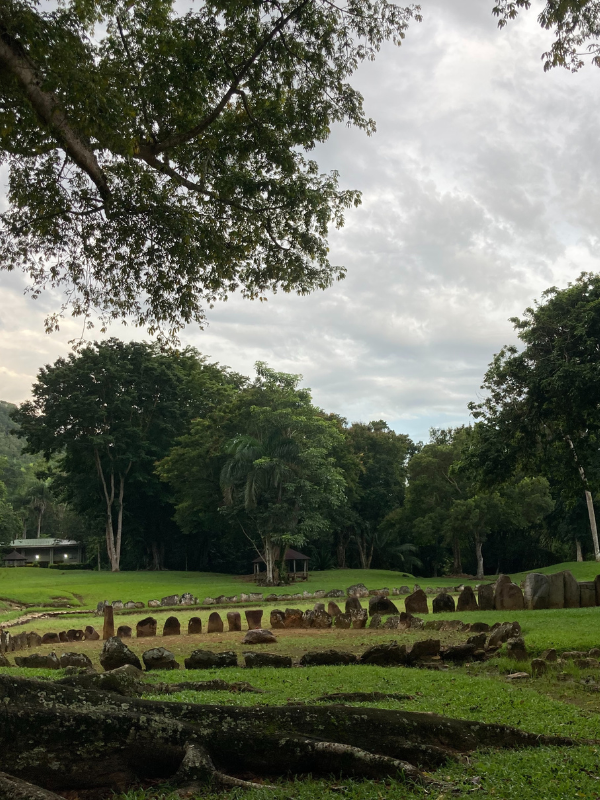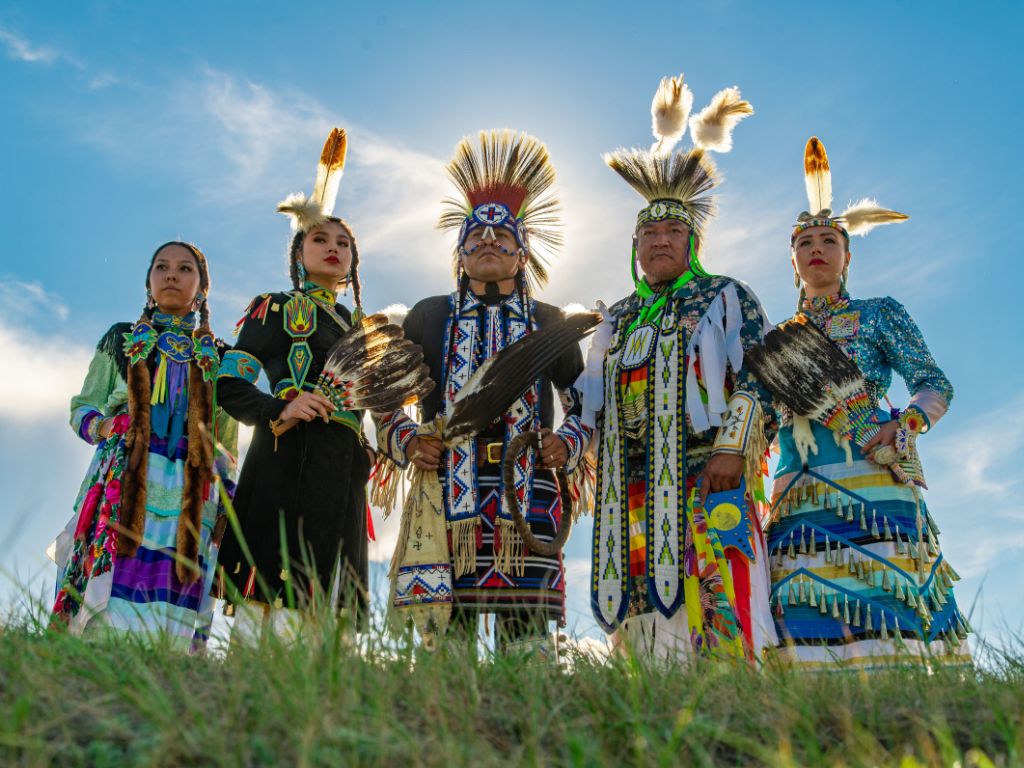
Indigenous Cultural Preservation Museum Tours: A Comprehensive Examination
Abstract: Indigenous cultural preservation museum tours represent a transformative paradigm shift in museology, moving beyond traditional colonial frameworks to embrace Indigenous self-determination, knowledge systems, and cultural revitalization. This article provides an in-depth analysis of these tours, exploring their historical context, core objectives, pedagogical methodologies, and the profound impact they have on both Indigenous communities and non-Indigenous audiences. It examines the critical role of Indigenous-led narratives, experiential learning, and ethical engagement in fostering understanding, reconciliation, and the ongoing vibrancy of Indigenous cultures within and beyond museum spaces.
1. Introduction: Redefining the Museum as a Site of Indigenous Empowerment
Museums, historically conceived as repositories of human endeavor and natural history, have long occupied a complex and often contentious position within Indigenous communities. For centuries, many institutions operated under a colonial gaze, acquiring Indigenous artifacts through unethical means, misrepresenting cultures, and effectively silencing Indigenous voices. However, a profound shift is underway. Indigenous cultural preservation museum tours emerge as a pivotal mechanism in this transformation, re-imagining museums not merely as static archives but as dynamic, living spaces for cultural reclamation, education, and reconciliation. These tours are distinct initiatives, often Indigenous-led or co-created, designed to present Indigenous heritage, knowledge, and contemporary realities from an Indigenous perspective, thereby fostering a deeper, more nuanced understanding for both internal community members and external visitors.

2. Historical Context: From Colonial Spectacle to Decolonial Dialogue
To appreciate the significance of contemporary Indigenous cultural preservation tours, it is essential to acknowledge the fraught historical relationship between museums and Indigenous peoples. During the 19th and early 20th centuries, many museums engaged in "salvage anthropology," collecting cultural objects, human remains, and ethnographic data under the premise that Indigenous cultures were vanishing. This often involved coercive practices, exploitation of sacred sites, and a systematic dislodgment of cultural property from its communities of origin. Exhibitions frequently portrayed Indigenous peoples as primitive, exotic, or relics of the past, perpetuating harmful stereotypes and contributing to the marginalization and dehumanization of living Indigenous communities.
The latter half of the 20th century witnessed increasing Indigenous activism and scholarly critique challenging these colonial practices. Calls for repatriation of ancestral remains and sacred objects, demands for self-representation, and the assertion of Indigenous intellectual property rights forced museums to confront their past. This era marked the genesis of a decolonization movement within museology, advocating for shared authority, collaborative curation, and the integration of Indigenous epistemologies into museum operations. Indigenous cultural preservation museum tours are a direct outcome of this ongoing decolonization process, fundamentally altering the power dynamics and narrative control within these institutions.
3. Core Objectives and Transformative Goals
Indigenous cultural preservation museum tours are multifaceted initiatives driven by several interconnected objectives:
- Cultural Revitalization and Language Preservation: For Indigenous communities, these tours serve as vital platforms for reconnecting with ancestral knowledge, cultural practices, and languages. By engaging with objects, stories, and traditions housed within museums, community members, particularly youth, can strengthen their cultural identity and contribute to the ongoing vibrancy of their heritage.
- Self-Representation and Narrative Reclamation: A primary goal is to empower Indigenous peoples to tell their own stories, in their own voices, challenging historical misrepresentations and stereotypes. Indigenous-led tours ensure that narratives are authentic, respectful, and reflect the diverse experiences and worldviews of the communities represented.
- Education and Awareness for Non-Indigenous Audiences: These tours provide invaluable opportunities for non-Indigenous visitors to learn about the rich histories, complex societies, and contemporary realities of Indigenous peoples. They foster empathy, challenge preconceived notions, and promote a deeper understanding of Indigenous rights, sovereignty, and ongoing contributions to global society.
- Truth and Reconciliation: In settler-colonial nations, these tours play a crucial role in the process of truth and reconciliation. By openly acknowledging historical injustices, residential school legacies, and systemic discrimination, and by highlighting Indigenous resilience and resurgence, they facilitate dialogue and promote healing.
- Economic Empowerment and Community Engagement: Many tours are developed and delivered by Indigenous community members, including Elders, knowledge keepers, artists, and youth. This not only creates economic opportunities but also strengthens community bonds, transfers intergenerational knowledge, and fosters a sense of ownership over cultural heritage.
- Advocacy for Indigenous Rights and Environmental Stewardship: Through the lens of cultural heritage, these tours often address contemporary issues such as land rights, resource extraction, climate change, and social justice, positioning Indigenous worldviews as vital for addressing global challenges.

4. Methodologies and Experiential Learning Paradigms
The pedagogical approach of Indigenous cultural preservation museum tours significantly diverges from traditional museum interpretation. They prioritize experiential learning, oral traditions, and holistic engagement:
- Indigenous-Led Storytelling: The cornerstone of these tours is the Indigenous guide or interpreter. These individuals, often community members, bring lived experience, ancestral knowledge, and personal narratives that imbue objects and exhibitions with profound meaning. This direct human connection transcends mere factual dissemination, fostering emotional resonance and deeper understanding.
- Holistic Interpretation: Unlike conventional tours that might focus solely on the aesthetic or historical aspects of an artifact, Indigenous tours often contextualize objects within their spiritual, social, and ecological frameworks. An artifact is not just a tool or a decorative item; it is an embodiment of relationships, protocols, and a continuous cultural practice.
- Interactive and Participatory Elements: Many tours incorporate hands-on activities, workshops (e.g., weaving, beading, carving demonstrations), traditional song and dance performances, and opportunities for direct dialogue with knowledge keepers. These elements move beyond passive observation, allowing visitors to engage directly with cultural practices.
- Language Integration: The revitalization of Indigenous languages is a critical component. Tours may incorporate Indigenous language greetings, key terms, or even offer segments entirely in an Indigenous language, providing an immersive experience and highlighting the intrinsic link between language and cultural identity.
- Connecting Past to Present: Rather than presenting Indigenous cultures as static or confined to the past, these tours consistently draw connections between historical artifacts and contemporary Indigenous life, art, activism, and cultural expressions. This emphasizes the dynamism, adaptability, and ongoing vitality of Indigenous societies.
- Emphasis on Place and Land: Many tours extend beyond the museum walls, incorporating discussions about traditional territories, land stewardship, and the spiritual connection between Indigenous peoples and their ancestral lands, even when the tour is within an urban museum setting.
- Ethical Protocols and Reciprocity: Guides often educate visitors on appropriate cultural protocols, the significance of reciprocity, and the importance of respectful engagement with Indigenous knowledge and communities. This fosters a sense of responsibility and ethical tourism.
5. Challenges, Criticisms, and Future Directions
Despite their transformative potential, Indigenous cultural preservation museum tours face several challenges:
- Authenticity vs. Performance: A delicate balance must be struck between presenting authentic cultural expressions and the potential for cultural practices to be perceived as performance for tourist consumption. Ensuring that tours are driven by community needs and cultural protocols, rather than solely market demands, is crucial.
- Tokenism and Superficial Engagement: There is a risk that museums might implement such tours as a superficial gesture of inclusion without genuinely ceding authority or engaging in deep, systemic decolonization of their practices. True partnership requires shared decision-making, equitable resource distribution, and long-term commitment.
- Intellectual Property and Data Sovereignty: Safeguarding Indigenous intellectual property, traditional knowledge, and cultural expressions is paramount. Mechanisms must be in place to ensure that knowledge shared during tours is protected and used respectfully, in accordance with community protocols.
- Funding and Sustainability: Developing and maintaining high-quality Indigenous-led tours requires significant, sustained funding and institutional support, which can be a perpetual challenge for museums and Indigenous organizations.
- Audience Readiness and Misconceptions: Some visitors may come with preconceived notions or a lack of understanding regarding Indigenous issues. Guides must navigate these situations with sensitivity, educating without alienating, and fostering an environment of respectful inquiry.
Future directions for Indigenous cultural preservation museum tours involve deepening institutional commitments to co-creation and co-management, ensuring that Indigenous communities have genuine ownership and control over their cultural heritage within museum settings. This includes further efforts in repatriation, developing robust digital platforms for Indigenous cultural expression, and expanding educational initiatives to reach a wider global audience. Emphasizing the agency of Indigenous peoples as innovators, artists, and knowledge holders, rather than merely subjects of study, will continue to be central to these evolving initiatives.
6. Conclusion: A Horizon of Shared Understanding and Cultural Resurgence
Indigenous cultural preservation museum tours represent a vital and evolving frontier in contemporary museology. By challenging colonial legacies, amplifying Indigenous voices, and fostering authentic engagement, these tours are not merely educational excursions but profound acts of cultural reclamation, reconciliation, and empowerment. They serve as critical bridges, connecting past to present, communities to institutions, and diverse peoples to a deeper understanding of shared humanity. As museums continue their journey towards decolonization, Indigenous-led tours will remain indispensable tools for fostering respect, celebrating resilience, and ensuring the vibrant continuity of Indigenous cultures for generations to come. Their success lies not just in the narratives they convey, but in the transformative relationships they build, charting a course towards a more just, inclusive, and culturally rich future.


